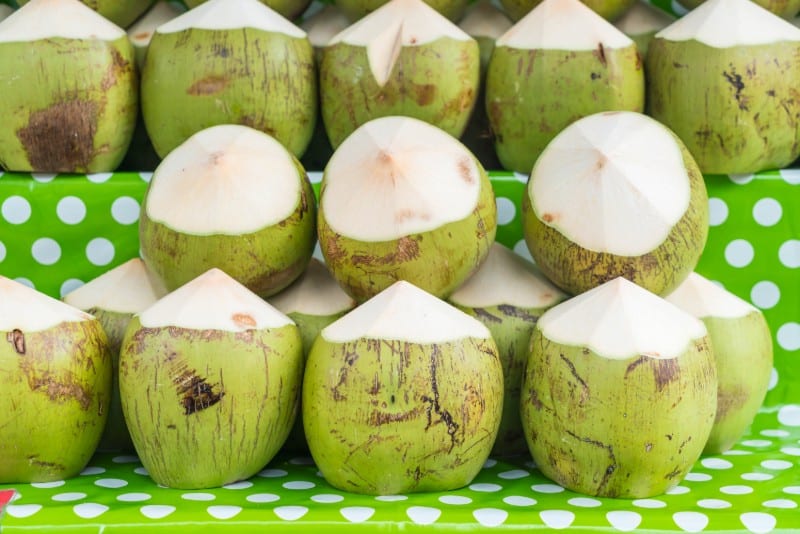Coconut Water vs Coconut Milk
The tropical fruit, coconut is a delicacy enjoyed by people all across the world. Coconut water, coconut flour, coconut milk, and coconut cream are some common ingredients that contain coconut. Many people get confused between coconut water and coconut milk. Let’s find out the differences between the two.
The coconut fruit consists of 38% shell, 10% water, and 52% coconut flesh — also called coconut meat. Both coconut water and coconut milk come from the edible part of the fruit, called the endosperm tissue. But these are two very different products in taste and texture.
Coconut water is fresh, sweet, and translucent fluid that you can drink straight out of the coconut fruit. It is found naturally in coconuts and a cooling drink available in several tropical countries and beaches. When young coconuts mature,coconut water hardens to form coconut meat — known as the solid endosperm. It isn’t necessary that the entire cavity be filled with coconut meat. It’s very common to find coconut water and meat within the same coconut.

Coconut milk is a processed byproduct. It isn’t found naturally. It is made by grating the flesh of mature or brown coconuts and heating it in water. Once the mixture simmers, it is strained to remove any remnants, preferably solid, and we are left with the milky fluid. Coconut milk can be made either thick or thin depending on the amount of water added to it. Thin coconut milk is consumed as a dairy replacement and can be added to coffee, tea, smoothies, or shakes. Thick coconut milk is more cream-like and is used in curries, meals, and traditional sauces which usually contain dairy.
Coconut milk and coconut water have different nutritional profiles. Coconut water is 94% water and carbs while having little to no fat and proteins. It is also a very low-calorie drink, making it perfect to replace soda or other aerated beverages in your diet. Coconut milk is high in fat and a significant ingredient of the Keto diet. While around 89% of the fat content in coconut milk comes from saturated fats, studies show that it doesn’t cause a detrimental effect on blood lipid profiles.
There are certain disadvantages of consuming coconut water and coconut milk. Coconut water’s potassium levels may help lower blood pressure in people with high blood pressure. However, those with kidney disorders may want to limit their intake. This is due to the fact that impaired renal function can lead to elevated blood potassium levels since the kidney can’t excrete potassium. Consuming excess of this mineral can have a dangerous reaction. Coconut milk’s MCT content may have a positive effect on weight loss, it’s still a high-calorie beverage. Therefore, try to limit your intake to keep your “calories in versus calories out” equation managed. Some experts argue that since coconut milk is a high FODMAP drink, you should limit its intake if you have a FODMAP intolerance or are following a low FODMAP diet. But some experts classify it as a low FODMAP food. It is best if you figure it for yourself and your ability to tolerate coconut milk.FODMAP is an acronym for fermentable oligo-, di-, monosaccharides, and polyols — a group of carbs that may cause abdominal symptoms, such as bloating, nausea, diarrhea, and constipation, in some people. It is recommended to people who have trouble digesting wheat or gluten allergies. FODMAP is also used to understand why certain people suffer from indigestion by the process of eliminating specific foods in their diet.
If you choose to drink packaged coconut water or coconut milk, always check the ingredient list and avoid those with added sugars.

